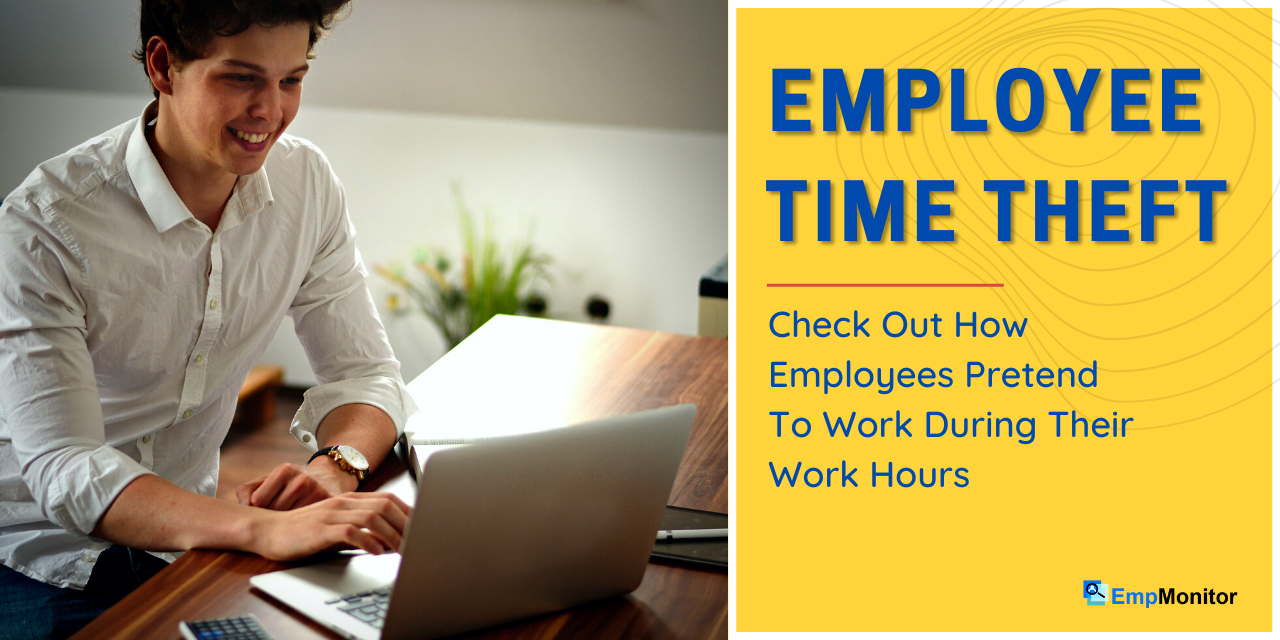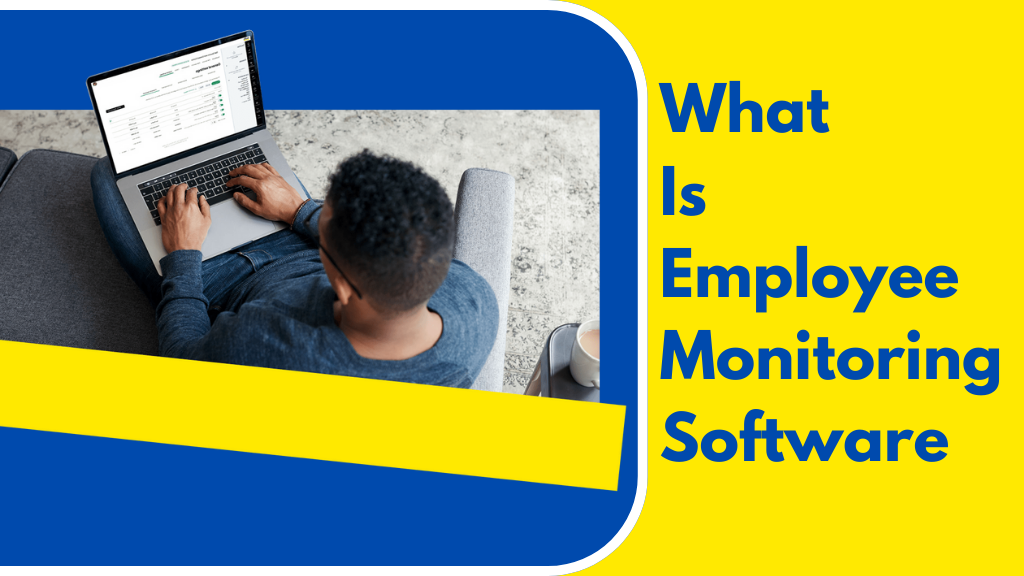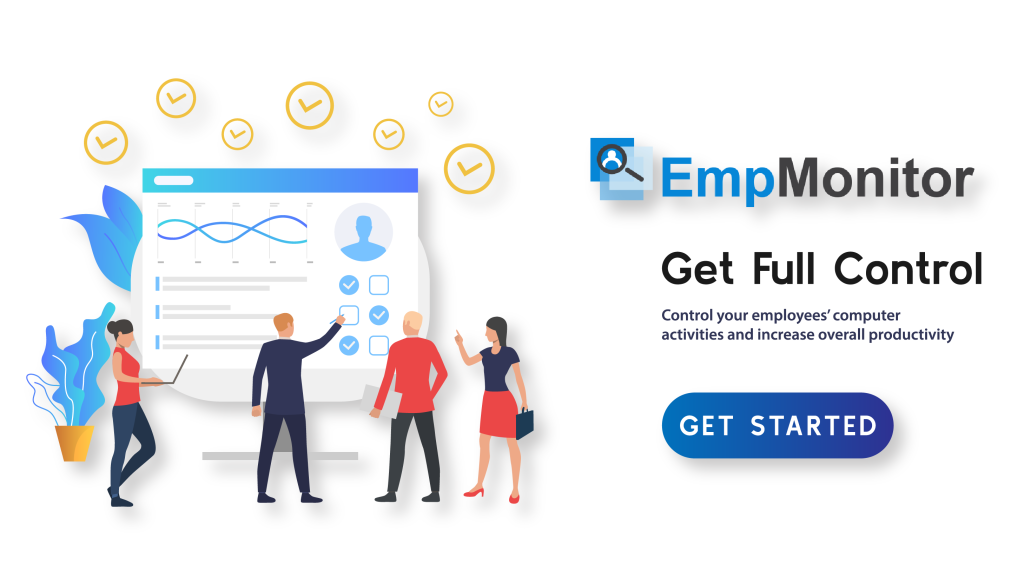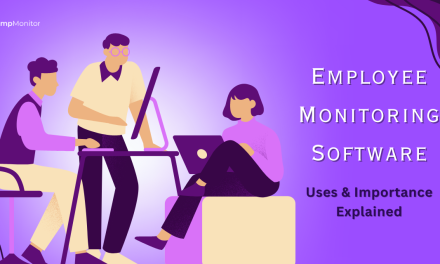Since Covid-19 has arrived in our daily lives, we have faced new challenges to live and work in a safer corporate environment. Many businesses are embracing a new work-from-home culture where employee monitoring software comes in trend. That helps many managers to keep a track on employees and encourages everyone to work in a safer environment.
But this solution had emerged as a new challenge itself. A sudden lack of visibility makes it difficult for managers to manage remote working forces during Covid-19. As a result, some managers struggle to understand the productivity of their employees.
But how do you figure out a way to avoid this downfall?
You can take help from several employee monitoring software available in the market.
Well! As a manager, you can alert employees if they are pretending to be active during work hours by observing their red signals. But is it that easy?
There are some red flags to watch out for and determine whether your employees are productive during work from home- being at lower productivity levels or staying active in other channels. But, it is not easy to keep an eye on every employee’s work.
Don’t worry. We have a better approach for you. There are remote employee monitoring software options available on the market that can help you in this situation by not only allowing you to keep an eye on your employee’s work but also allowing you to measure employee productivity levels.
But before jumping on to how a workforce monitoring solution can give your workplace a productive edge, let’s see what remote working can contribute to better workplace functioning.
Hit the play button to listen this podcast:
Benefits Of Remote Work For Business
While there are numerous reasons employees and employers prefer remote work, it is all about the benefits it provides to both the business and the employees. On the one hand, remote working is bringing down employee satisfaction and retention rates, while on the other side, corporations are saving money by reducing office costs such as utilities, transportation, rent, and others.
With employees working remotely, the various motives that result in laziness at the workplace are successfully avoided or decreased, leading to employees saving their precious time to create a better work-life balance. Researchers have discovered that employees who earn a living from home are more productive.
So, what does this suggest?
Ultimately, it is a win-win situation for both employees and corporations. Corporations save money by reducing office expenses and increasing productivity, while employees enjoy the freedom of working from home.
But remember, everything has its own drawbacks.
So, the question here is, how do you figure out if your employees are not productive during their work hours?
Take a look at a few employee monitoring software features and actions you can take to avoid low productivity levels.
Are Your Employees Pretending To Be Active Online?
It is a drawback for employers if their employees pretend to be active during working hours. In a survey by Preply, a language tutorial platform, states that in the participation of 1,200 people from the United States, 44% of remote workers and 33% of bosses have faked being active on a work chat app. And another research by Qatalog and Gitab states that remote workers spend more than 60 minutes on social media platforms, such as being always active on a social media platform during their office hours.
But have you ever thought about why employees try to appear fake during their work hours?
There might be several reasons employees who work remotely want to appear active, but some of the major causes are;
- They want to seem more productive.
- Wishing to conceal their activities.
- Attempting to charge more than the number of active hours worked.
Based on the above assumptions, now you may presume that some of your employees might use tricks to present themselves as being active in the past or fake it in the future. Here are a few signs that will help you identify them.
Signs Your Employees Might Be Faking Their Online Activity
1. Employee Takes More Than Usual Time To Complete Tasks
If you notice one of your employees is spending more time than usual to complete a task, it is a sign that they are pretending to be active. The idea of remote work is generally interrelated with increased productivity, not worse. So if you notice an employee being unusually slow, that could be a red flag. There are chances that they could be taking frequent breaks or doing some personal work.
2. Productive Only When Monitored
If your employees are showing results when you monitor their work by looking over their shoulders, you will lose productivity as soon as you leave their desks. It might be a sign they are faking being active when you are not monitoring them. They are more likely to complete their task quickly than usual hours if the employees are aware you will review their work. However, their work will slow down when you are not monitoring them.
So, based on these presumptions, you should implement employee monitoring software in their work routine. Because there may be a higher probability that your remote employees are not truly working and are concealing their activity while you are away.
3. Being Active On Social Media
These may seem counter-native, but if your employees are always available on Instagram, Facebook, or Whatsapp, they are probably not focusing on their work. Employees should respond quickly, but their absence or delay may indicate that they are on social media, sitting in front of their computer, or not working on their tasks.
4. Productivity Differs With Location
Most companies have worked with employees in teams for many years, so it is easy for us to monitor employee performance and manage tasks effectively. So in that situation, all employees seem to work equally. But as the pandemic forced many companies to shift their employees to remote work situations, employers have the availability to observe individual performance results. That enables managers to compare their production levels with the help of employee monitoring software individually while working from home.
Isn’t it difficult to identify?
Well! Problems will arise, but for now, all we can do is take the necessary steps. Read further to know how anyone can handle these situations and maintain employee efficiency.
READ MORE
5 Ways How Employee Monitoring Can Be Done Ethically?
‘Trust But Verify’- Why Your Firm Needs Productivity Tracking Software?
Employee Engagement Is The New Trend You Need To Catch Up In 2023
Make The Most Out Of Workforce Monitoring Tool- EmpMonitor
If you, as a manager, are a little doubtful of your remote employees because they are underperforming. Then, do not worry. We have some great tips for monitoring and measuring their work.
Keep A Check On Them At Regular Intervals
No one likes to be micro-monitored by their manager, but taking a few steps to micromanage them is generally essential in such situations. If you notice a few red flags, you can initiate monitoring your employee performance with the help of various employee monitoring software– one such example is Empmonitor. This software tracks every single activity of how they spend their time on several websites and applications. Apart from this, EmpMonitor provides valuable insight into how employees utilize their resources and tell their productivity levels.
Monitor All Aspects Of The Workplace At One Place Using Employee Monitoring Software
In addition to the time-tracking feature, Empmonitor also offers a variety of tools that can use to track employee activity. The advantages of utilizing Empmonitor software include tracking, collecting data, and notifying employers about office hours, productive hours, neutral hours, active hours, and productivity percentages. It also has some other exciting features that you can use to keep an eye on your workforce.
- Task Management
- Accurate activity & productivity reports
- Geo location-based tracking
- Screenshot monitoring
- Time Management
- Remote Access Management & many more.
From a business standpoint, PC monitoring software is the ideal solution for reducing the workforce required for monitoring and, as a result, increasing employee productivity.
This software also stops and finds extensive data breaches with the assistance of employee activity monitoring and comprehension. Installing this program on your device can hinder your privacy.
Additionally, for better execution, employers can provide company-issued devices with employee monitoring software to prevent this from happening.
Note:
It’s crucial that you, as an employer, fully disclose to your remote or hybrid workforce that you use employee monitoring software to keep track of your job.
All In All,
The rise of remote work was an underlying situation before the pandemic hit, but COVID-19 accelerated this trend. Businesses had to shut down their physical location and move their workforce towards remote work to continue their company goals and work leaving us with a disadvantage.
While working remotely, not every employee appears to be as productive. During the epidemic working from home was a completely new experience for everyone. Therefore, many employees had trouble meeting their deadlines.
This encounter led to a decline in employee productivity, including a lack of supervision, communication, and monitoring of employee activities.
To overcome these problems, many companies have enlisted the help of employee computer monitoring software during the pandemic. These tools have helped many organizations to meet their needs and goals efficiently. As a result, many businesses have seen their employee production level boosted from 20% to 30%.
Today, regardless of whether their workforce works from an office, at home, or in a hybrid model, many businesses continue to concentrate on creating, adapting, and utilizing employee monitoring software.
I hope my suggestions will bring a change to your business. Thank you.















